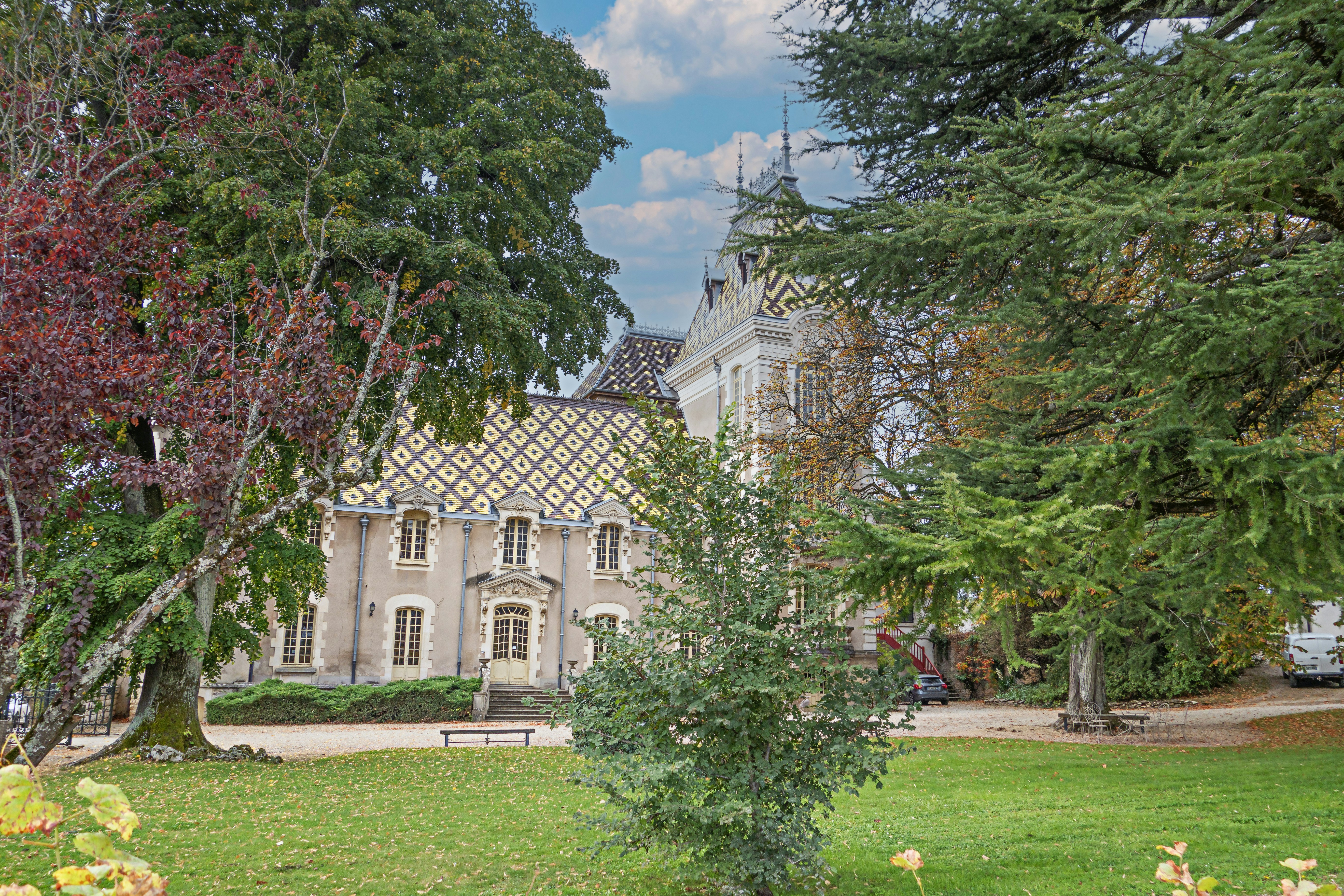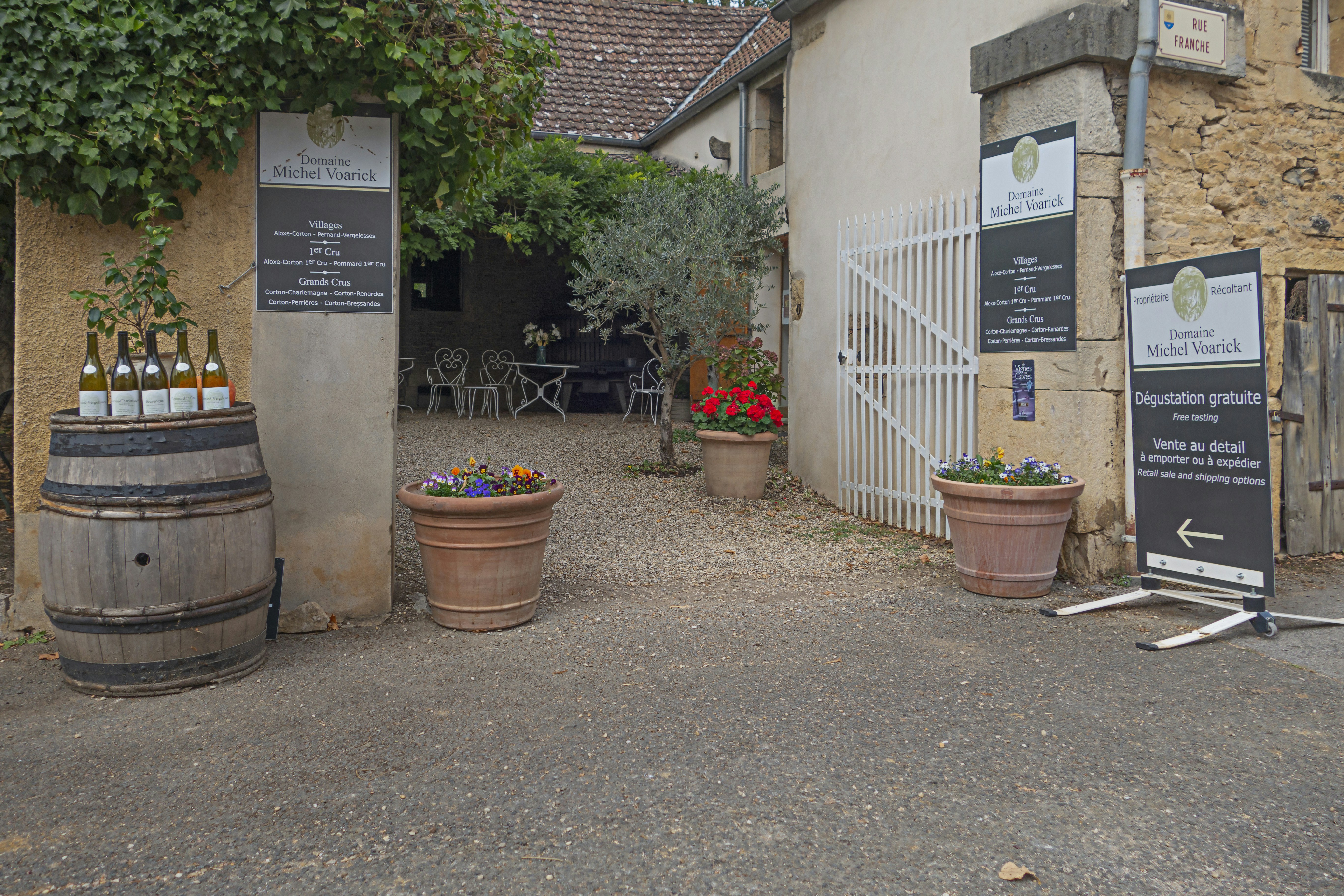Aloxe-Corton: A gem in Burgundy's crown
In the heart of Burgundy's famed Côte de Beaune, a small village holds court over some of the world's most prestigious vineyards. Aloxe-Corton, with its ancient stone houses and narrow streets, might be easily overlooked if not for the extraordinary wines that bear its name. This unassuming commune, home to barely 200 souls, guards a viticultural legacy that spans centuries and continues to captivate wine enthusiasts from across the globe.

A Tapestry of Terroir
The landscape surrounding Aloxe-Corton is dominated by the imposing Hill of Corton, a geological marvel that gives birth to both red and white Grand Cru wines – a rarity in Burgundy. The hill's unique composition of limestone and marl soils, combined with varying exposures and altitudes, creates a patchwork of microclimates. This diversity is reflected in the wines produced here, each plot imparting its distinct character to the grapes.
On the lower slopes, Pinot Noir vines are cultivated, yielding the powerful yet elegant red wines of Corton. Higher up, where the soil becomes chalkier, Chardonnay reigns supreme, producing the opulent Corton-Charlemagne, a white wine of legendary status. These Grand Cru vineyards are jealously guarded, their boundaries having been meticulously defined over centuries of observation and experience.
A Legacy Written in Wine
The history of winemaking in Aloxe-Corton can be traced back to the early Middle Ages when monasteries played a crucial role in developing and preserving viticultural knowledge. The name "Corton" itself is believed to be derived from "Curtis d'Othon," referring to an estate owned by Holy Roman Emperor Charlemagne in the 8th century.
Legend has it that Charlemagne was particularly fond of the red wines from these slopes but disliked how they stained his white beard. In response, white grapes were planted on the upper part of the hill, giving birth to what would become Corton-Charlemagne. While this tale may be apocryphal, it speaks to the deep historical roots of winemaking in this region.
A Village Shaped by Wine
As one wanders through Aloxe-Corton, the influence of wine on every aspect of village life becomes apparent. Ancient stone walls enclose small family-owned domaines, many of which have been passed down through generations. The rhythm of life here is dictated by the viticultural calendar – from the winter pruning to the anticipation of harvest in late summer.
The village church, dedicated to Saint Pierre, stands as a testament to the community's enduring faith and tradition. Its simple stone facade belies an interior rich with history, where countless vignerons have prayed for favorable weather and bountiful harvests over the centuries.
Guardians of Tradition
Despite its small size, Aloxe-Corton is home to several renowned wine producers who serve as custodians of the appellation's reputation. These families, some of whom have tended the same plots for hundreds of years, blend time-honored techniques with modern innovations to craft wines that express the true essence of their terroir.
Visitors to the village are often surprised by the understated nature of these esteemed wineries. Here, pretension is eschewed in favor of a quiet pride in the land and its fruits. Tastings are conducted in centuries-old cellars, where the cool, damp air is perfumed with the heady aroma of aging wine.
Beyond the Vines
While wine undoubtedly takes center stage in Aloxe-Corton, the village and its surroundings offer other charms to the discerning visitor. The nearby Château de Corton-André, with its distinctive glazed tile roof, stands as a striking example of Burgundian architecture. Its gardens provide a peaceful retreat and offer panoramic views of the surrounding vineyards.
For those seeking to explore on foot or by bicycle, a network of trails winds through the vineyards, allowing intimate access to this storied landscape. Each season brings its own beauty, from the vibrant green of spring to the golden hues of autumn when the vines are heavy with ripe fruit.
A Feast for the Senses
No visit to Aloxe-Corton would be complete without indulging in the local cuisine. The rich, hearty dishes of Burgundy – coq au vin, boeuf bourguignon, escargots – find their perfect complement in the wines produced here. Local restaurants, often family-run affairs, take pride in sourcing ingredients from nearby farms and markets, ensuring that each meal is a celebration of regional flavors.
In the village square, a small market is held weekly, where local producers offer an array of artisanal cheeses, cured meats, and seasonal produce. It's an opportunity to engage with the community and gain insight into the culinary traditions that have evolved alongside the wine culture.
A Timeless Allure
As the sun sets over the Hill of Corton, casting long shadows across the ancient vineyards, one can't help but feel a sense of continuity with the past. Aloxe-Corton, in its quiet, unassuming way, embodies the very essence of Burgundy – a place where tradition and terroir intertwine to create wines of unparalleled depth and character.

For wine lovers and history enthusiasts alike, this small village offers a window into a world where the rhythms of nature still dictate the pace of life, and where each bottle of wine tells a story centuries in the making. In Aloxe-Corton, the legacy of Burgundy's winemaking tradition is not just preserved; it is lived, breathed, and savored with each passing vintage.
While Aloxe-Corton may be a destination for wine connoisseurs, those seeking a broader exploration of France's viticultural heritage might also consider a visit to Beaune, the wine capital of Burgundy, where the region's rich oenological traditions are celebrated on a grander scale.
Related articles
Show all
The 15 best things to do in Brest
Tucked away on the rugged coast of Brittany, a city of maritime heritage and modern allure awaits discovery. With its storied past and vibrant present, this French gem offers a unique blend of cultural experiences, natural wonders, and nautical adventures. From historic landmarks to cutting-edge attractions, visitors will find themselves immersed in a world where tradition and innovation coexist harmoniously.
Brest - FRANCE

Best 15 things to do in Calais
The northern coast of France beckons with its rich history, stunning landscapes, and unique cultural tapestry. Nestled at the narrowest point of the English Channel, a city stands as both a gateway to continental Europe and a destination in its own right. From towering landmarks to hidden gems, this coastal gem offers a diverse array of experiences for the curious traveler. Let's embark on a journey through the top 15 activities that can be enjoyed in this captivating French port city.
Calais - FRANCE

Best 15 things to do in Grasse
The French Riviera conjures images of glamorous beaches and star-studded film festivals, but tucked away in the hills above the coast lies a town that captivates visitors with a different kind of allure. Here, the air itself tells a story - one of blooming flowers, age-old traditions, and the art of perfume-making. Welcome to Grasse, where history and fragrance intertwine to create an unforgettable sensory experience.
Grasse - FRANCE

The top 15 things to do in Toulouse
In the heart of southwestern France, a city of terracotta roofs and vibrant culture beckons. Known as "La Ville Rose" for its distinctive pink hues, this urban gem offers a perfect blend of history, innovation, and joie de vivre. From ancient Roman ruins to cutting-edge aerospace museums, visitors can be immersed in a world where tradition and progress dance in harmony. Let's explore the top 15 experiences that shouldn't be missed in this captivating French metropolis.
Toulouse - FRANCE

The 15 best things to do in Blois
The Loire Valley, renowned for its majestic châteaux and picturesque landscapes, holds countless treasures waiting to be discovered. Among these gems, a charming city stands out, offering visitors a perfect blend of history, culture, and natural beauty. From its royal castle to its winding medieval streets, this enchanting destination invites travelers to step back in time while enjoying modern comforts and culinary delights.
Blois - FRANCE

Events and festivals on French Riviera
The Cote d’Azur is abuzz with glitz and glamour all year round but it’s the summer months that really get the party started on France’s sought-after south coast. Events and festivals are held every month and range from theatre performances and music festivals to cinematography celebrations and yacht races. A-listers, millionaires, and outright party people flock to the shores of the Mediterranean for a summer to remember as seaside towns and secluded beaches become the stomping ground for a summer of fun. Below we take a look at some of the best events and festivals on the Côte d’Azur and provide a handy event guide to help you plan your dream trip.
FRANCE

 Home
Home Wishlist
Wishlist